
The City of St. Charles R-VI School District ELA Proficiency Scale 6th Grade ELA Proficiency Scales
- Subject:
- English Language Arts
- Material Type:
- Assessment
- Author:
- Declan FitzPatrick
- Date Added:
- 10/27/2023

The City of St. Charles R-VI School District ELA Proficiency Scale 6th Grade ELA Proficiency Scales
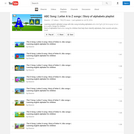
Series of videos for elementary students on ABC Song | Letter A to Z songs | Story of alphabets by eLearnin
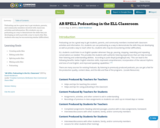
Podcasting can be a great way to get students, parents, and community members involved with classroom activities and information. ELL students can use podcasting as a way to demonstrate the skills they are developing as well as provide a way to reach other ELL students who may be encountering similar (difficulties).
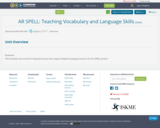
This template was created to help plan lessons that support English Language Learners for the SPELL project.

Direct teaching of vocabulary can help improve comprehension only when taught in meaningful context. Through the use of technology, students can develop their academic vocabulary in an engaging and fun way.
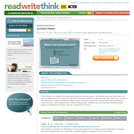
This online tool enables students to learn about and write acrostic poems. Elements of the writing process are also included.
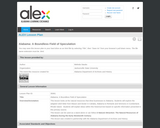
This lesson looks at the natural resources that drew businesses to Alabama. Students will explore the adapted 1820 letter from Mason and Dexter in Cahaba, Alabama to Richards and Simmons in Cumberland, Rhode Island. Students will explain ideas within this historical text based on specific information presented in this primary source. This lesson can be used as a stand alone or can follow A Natural Attraction: The Natural Resources of Alabama During the Early Nineteenth Century . This lesson was created in partnership with the Alabama Department of Archives and History.
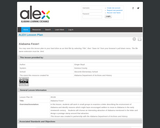
In this lesson, students will work in small groups to examine a letter describing the environment of Alabama and identify reasons which might have encouraged settlers to move to Alabama in the early nineteenth century. Students will choose an interesting attraction of Alabama mentioned in the letter and design a postage stamp around that attraction. This lesson was created in partnership with the Alabama Department of Archives and History.

In this lesson, students will learn about the executive branch of government at the state level, especially related to the first governors of the state of Alabama. Their impact on the development of Alabama and Alabama's role in the United States will be discussed. Students will use research and note taking skills to gather information on an early governor. Then students will participate in jigsaw groups to share their information, discuss the importance of each governor, similarities, and impact. Finally, students will discuss the role of governor and how governors have an impact on the state and the impact these men had in Alabama and in other states. This lesson was created in partnership with the Alabama Department of Archives and History.
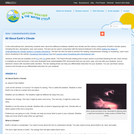
In this informational text, elementary school readers learn about the difference between weather and climate and about components of the climate system. The text can be used to practice visualizing and other comprehension strategies. Available in K-2 and 3-5 grade bands and as an illustrated book as well as a text document, the story appears in the online magazine Beyond Weather and the Water Cycle.

This seminar will introduce three of eight types of figurative language (alliteration, onomatopoeia, and idiom). Through mainly fictional texts( tongue twisters, comics, songs, etc.), you will identify these types of figurative language, determine their meanings, and formulate project-based activities to prove your understanding of these common figurative language types.StandardsCC.1.2.5.F Determine the meaning of words and phrase as they are used in grade-level text, including interpretation of figurative language.

Students use this online tool to create an alphabet chart or pages for an alphabet book.
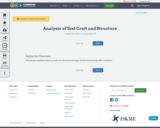
This lesson explores author's craft and structure through articles that directly affect students.
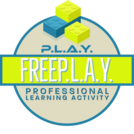
As teachers, one of our primary responsibilities is to help students understand and analyze various types of texts. To do this effectively, we need to have a solid understanding of the text ourselves. This learning activity will help you develop your skills in analyzing texts and prepare you to help your students do the same.
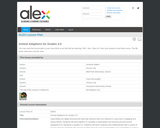
HyperSlides are digital lessons/units that help students learn the material in a way that is engaging and inquiry-based. Students will work together to complete a HyperSlides unit centering around animal adaptations for standards in grades 3-5. Students will work creatively and collaboratively with a variety of Course of Study standards that engage students through using Google Slides and a Hyperlinks to assist in the understanding of animal adaptations. This project will take several class periods to complete. After an introduction to the Hyperslides, students are encouraged to work at their own pace, but Hyperslides can be assigned on a daily basis. This Lesson Plan was created in partnership with the Birmingham Zoo.
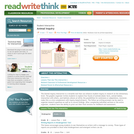
Supporting inquiry-based research projects, the Animal Inquiry interactive invites elementary students to explore animal facts and habitats using writing prompts to guide and record their findings.
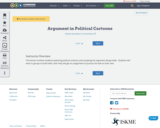
This lesson involves students exploring political cartoons and analyzing the argument being made. Students will work in groups to build skills, then they will get an assignment to practice the skill on their own.

The ability to ask and answer questions while reading is essential to comprehension. This article discusses instructional strategies used to teach questioning and provides many online resources. The article appears in the free, online magazine Beyond Weather and the Water Cycle, which explores the seven essential principles of the climate sciences for teachers in k-grade 5 classrooms.

In this seminar you will be engaged by video, text, and activities that will help you identify and explain the “Author’s Purpose” of printed material. You will be using habits of mind which focus on clarity in communication, as well as accessing prior knowledge to make new decisions regarding the purpose of text. Realize that authors of any printed material have a reason for writing. Understanding this purpose will help you develop your own comprehension and writing skills.StandardsCC.1.2.6.D - Determine an author’s point of view or purpose in a text and explain how it is conveyed in the text.
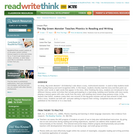
Go Away, Big Green Monster! Ed Emberley's tale about a scary, multicolored monster is used to help students build their reading fluency and word recognition skills. In this lesson, students chorally read the story and then point out familiar color words or sight words that appear in the story. After finishing the story, students are introduced to four different literacy center activities that include participating in a read along, building word families with story words, playing a memory game with color words from the story, and retelling story events using sentence strips. In the sessions that follow, students create their own artwork of the big green monster and use that artwork to help them write a story. Students use both self- and peer-editing to improve their writing. Completed stories are either published on the Internet or in a class book.